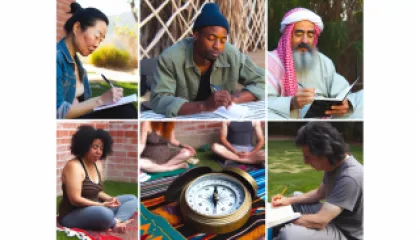Overcoming Anxiety with Lessons from 'The Alchemist'
1 year ago
Anxiety
Learning from 'Cocoon': Practical Care Tips for Aging Parents
1 year ago
Aging Parents
Understanding Grief: Insights from Recent Studies
1 year ago
Grief
Mastering Body Language: The Comprehensive Guide
1 year ago
Body Language Basics
Understanding Recovery: A Review of Emotional Abuse Healing Research
1 year ago
Healing from Emotional Abuse
Mindfulness vs. Meditation: A Step-by-Step Guide to Understanding the Differences
1 year ago
Mindfulness vs Meditation
Top 10 Strategies to Discover Your Life Purpose
1 year ago
Finding Life Purpose
The Psychological Impact of a Digital Nomad Lifestyle
1 year ago
Digital Nomad Psychology
Breaking Barriers: An Interview with a Diversity Expert on Confronting Bias
1 year ago
Confronting Bias
Rethinking Academic Stress: A Personal Perspective
1 year ago
Academic Stress
Mastering the Art of Overcoming Resistance: A Comprehensive Guide
1 year ago
Understanding Resistance
Sparking Change: My Journey to Inspire and Motivate Others
1 year ago
Motivating Others












